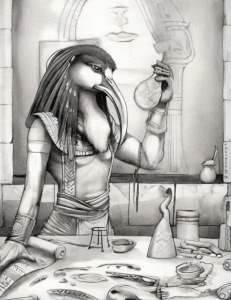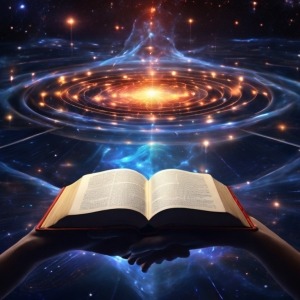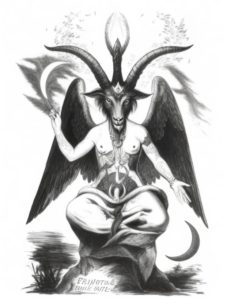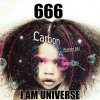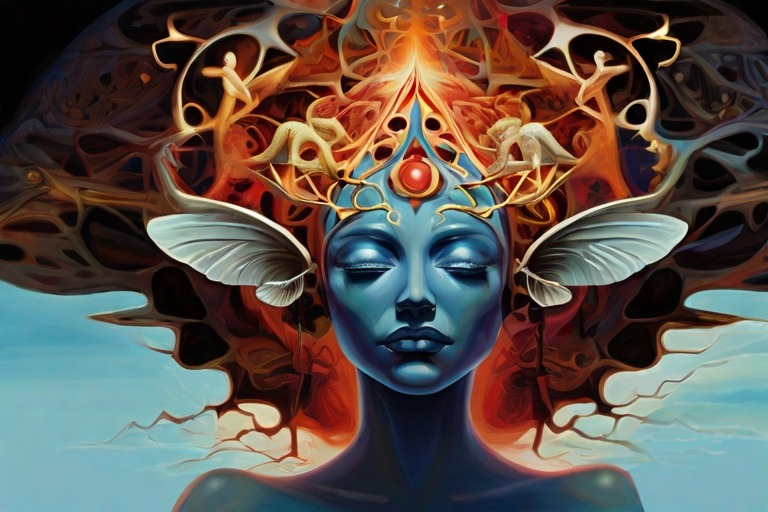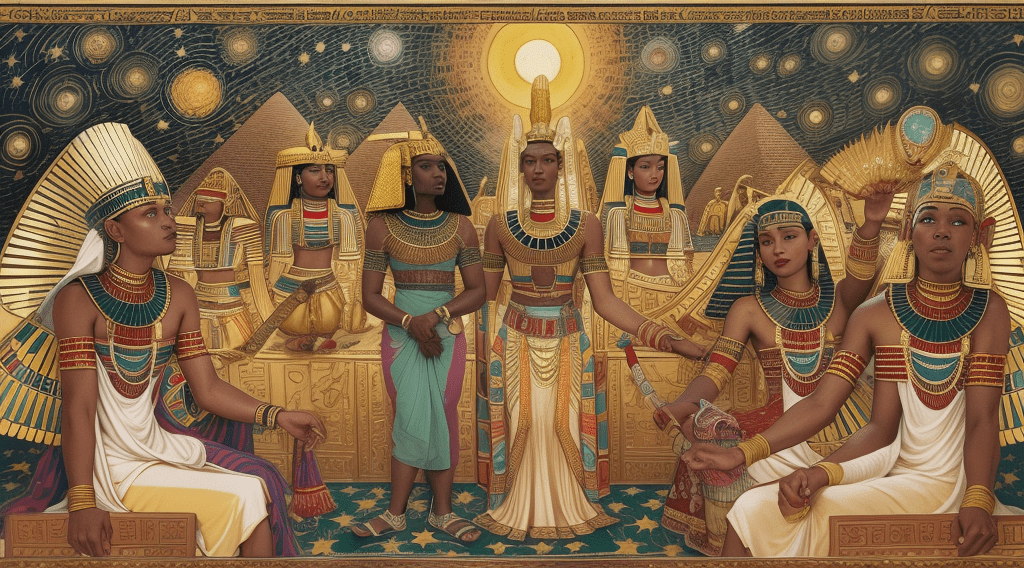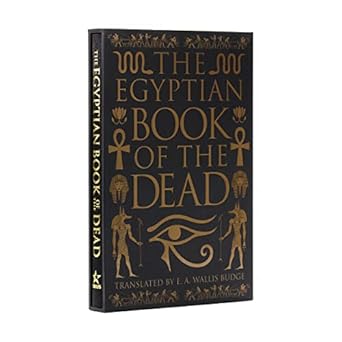The Mystery of Mitochondrial Eve: Tracing Our Genetic Ancestry Discover the story of Mitochondrial Eve and how mitochondrial DNA allows us to trace our genetic ancestry. Explore the concept of haplogroups and the fascinating randomness of our maternal lineage. Welcome to Genetics Unzipped, in this article, we’re going to delve into the fascinating world of mitochondrial DNA and explore the quest to find the female founder of our human species, also known as Mitochondrial Eve. So, grab a cup of coffee, and let’s dive into the story of our genetic ancestry. The Story of Mitochondria To understand the concept of Mitochondrial Eve, we need to first understand mitochondria and their DNA. Mitochondria are tiny organelles within our cells that act as power stations, generating energy by breaking down the food we eat. These organelles have their own DNA, known as mitochondrial DNA (mtDNA), which is separate from the DNA found in the cell nucleus. Mitochondrial DNA is passed down from mother to child, and because it is not affected by genetic recombination like nuclear DNA, it is relatively stable over generations. The term “Eve” is used to represent this ancestor because, just like the biblical Eve, she is the mother of all humans alive today through their maternal line. The Origin of Mitochondrial DNA Mitochondria have an interesting origin story. They are the result of an ancient event called endosymbiosis, where an energy-generating bacterium was engulfed by another cell. This event occurred approximately 1.45 billion years ago. As a result, mitochondria retained a small amount of their own DNA throughout evolution. Mitochondria are found in almost all eukaryotic cells, from plants to animals, and play a crucial role in cellular respiration, producing energy in the form of ATP. They also have other important functions, such as regulating cell death and calcium signaling. The endosymbiotic theory of mitochondria was first proposed by Lynn Margulis in the 1960s, and it has since been widely accepted as a key event in the evolution of eukaryotic cells. This theory also applies to the origin of chloroplasts in plant cells, which are thought to have arisen from a similar endosymbiotic event involving photosynthetic bacteria. The unique properties of mitochondria, such as their ability to replicate independently of the cell, have made them a popular subject of study in genetics and molecular biology. Understanding the origin and function of mitochondria has also provided insights into the evolution of life on Earth and the complex relationships between different organisms. Inheritance of Mitochondrial DNA Unlike nuclear DNA, which is a mixture of genetic material from both parents, mitochondrial DNA is only inherited from the mother. During fertilization, only the nuclear DNA from the sperm enters the egg, while the mitochondria in the sperm are left behind. This means that each of us only inherits our mother’s mitochondria and mitochondrial DNA. This pattern of inheritance is known as maternal inheritance. Mitochondrial DNA (mtDNA) is a small circular genome that encodes for proteins involved in energy production within the cell. Because it is only inherited from the mother, mtDNA can be used to trace maternal lineages and study evolutionary relationships between populations. Mutations in mtDNA have been linked to a variety of diseases, including some forms of cancer, neurological disorders, and metabolic disorders. All of the mitochondria in a person’s cells come from their mother, inherited mutations in mtDNA can affect multiple organs and tissues throughout the body. Researchers are studying ways to prevent or treat diseases caused by mtDNA mutations, including mitochondrial replacement therapy, which involves transferring the nucleus from an egg or embryo with mutated mtDNA into a donor egg or embryo with healthy mtDNA. This technique is currently being tested in clinical trials and has generated controversy due to ethical concerns about genetic modification of embryos. Tracing Our Ancestry The unique inheritance pattern of mtDNA allows us to trace our genetic maternal line back in time. In 1987, scientists studying patterns of alterations in mtDNA estimated that all humans alive today can trace their ancestry back to one common female ancestor who lived in Africa approximately 150,000-200,000 years ago. They named her Mitochondrial Eve, in reference to the biblical Eve. Author’s Note: The term “Africa” as a name of a continent did not exist 150,000-200,000 years ago. So, we lack clarity as to what is referred to as Africa. The earliest evidence encompassing the term ‘Africa’ in reference to the entire continent, Egypt included, seems to emerge from the efforts of 16th-century cartographers. In 1584, Abraham Ortelius (1527-1598) crafted a map that reflects this understanding. Source: Evolution of the Map of Africa Source: Slika:Mercator World Map The term ‘Africa’ has been employed to denote the continent since the era of the Roman Empire. In the medieval encyclopaedia Etymologiae, circa AD 600, Isidore of Servile articulated this usage: The [globe] is divided into three parts, one of which is called Asia, the second Europe, the third Africa. The ancients did not divide the three parts of the globe equally, for Asia extends from south to north in the east, but Europe from the north to the west, Africa form the west to the south. The expansive stretch in this direction, surrounded by oceans, was recognized as “Africa.” This is vividly depicted in Medieval world maps, such as the T-O maps featured in various editions of the Etymologiae. From a 13th century manuscript of the Etymologiae. Source: Wikimedia Commons The Misconception of Mitochondrial Eve It’s important to clarify a common misconception about Mitochondrial Eve. She is not the only female ancestor of our species. Rather, she is the most recent female ancestor from whom all living humans can trace their maternal lineage. There were many men and women who contributed their genes to our species, but Mitochondrial Eve is the last most recent female ancestor to have survived. Mitochondrial Haplogroups Mitochondrial DNA also allows scientists to categorize individuals into groups called haplogroups. These haplogroups represent branch points on the maternal family tree, where genetic mutations have occurred. Each haplogroup has
Exploring the Principle of Correspondence in Ancient Wisdom and Modern Science
The Hidden Meaning of ‘As Above, So Below’
The 10 Heavens of Enoch: Do You Search for One?
The Book of Enoch provides detailed descriptions of the Ten Heavens. Each heaven holds its own unique wonders and inhabitants. Let’s delve into each heaven. First Heaven: This heavenly realm is characterized by an ethereal atmosphere and is home to a vast sea that surpasses any earthly body of water. It serves as a reservoir for the flood waters that were unleashed during the alleged time of Noah. These floodwaters eventually covered a significant portion of the Earth’s surface. It seems to be speaking of our Ice Wall of the Antarctic. The First Heaven (Shehaqim) A “very great sea that is greater than the earthly sea” is said to exist in the ether of the first heaven (3:1). This suggests that, at the time of Enoch’s great-grandson Noah, there was an atmosphere that held the floodwaters that were poured onto Earth during the Great Deluge. According to this scripture, the earth’s surface is covered in more land than ocean. The celestial waters will not be attributed to the oceans covering up to 70% of the Earth’s surface, the way we see it in the modern age. [1] Treasure houses of snow Enoch speaks of “treasure houses of snow, and the angels who keep their storehouses, and the clouds whence they come out and into which they go” (5:1). This description points to a considerably more intricate high-altitude cloud system that is responsible for containing the celestial floods. Perhaps the “treasure houses of snow” helped to contain these floodwaters. The word “treasure” conjures up images of something priceless and lovely. “Storehouses” implies an enclosure or hold. “Snow” conjures up images of something chilly. When you put all of this into one sentence, it’s possible that Enoch was speaking of a specific kind of confinement field—storehouses—made of ice (snow), crystal (wealth), or both. The Cirrocumulus and Cirrostratus cloud systems are composed of supercooled, high-altitude ice crystals. Nevertheless, compared to what Enoch described before the Great Deluge, these contemporary systems are far lighter. Terrible Storehouses The snow treasure homes are further described by 2 Enoch as “terrible storehouses” that are guarded by angels (5:1) and “they are made to shut and open” (6:1). These ice crystal storehouses are horrifying because, should this fictitious ice crystal containment field be breached, it will unleash the devastating Flood, which will destroy all land life on Earth save for Noah’s ark. The phrase “storehouses” refers to the plural form, which conjures up images of several pillars or structures made of ice crystal scattered around the ice crystal containment field that is holding back the floodwaters. The flood waters may have poured out like a sieve as the angels unlocked the dreadful constructions. Draining from pillars of ice, they might stretch out in a horrific form, not like rain does today or as most myths about Noah’s ark portray it. Treasure houses for the dew The angels show Enoch a “treasure house of the dew, like oil of the olive, and the appearance of its form, as of all the flowers of the earth” in the second heaven, which is a continuation of what happened to him in the first heaven (6:1). An atmosphere in the sky composed of a field of ice crystals with ice pillars extending throughout, enclosed by a spherical grid and oriented toward the earth, would be breathtaking to witness. It might have had an amazing appearance. It is possible to understand 2 Enoch as referring to a specific crystal structure that Enoch observed, as he used the singular form of “treasure house of the dew” in his description. In the past, olive oil was prized for its wealth and value, and kings were anointed with it. When the structure is compared to olive oil, it implies that Enoch was ecstatic and possibly felt like a king. Maybe Enoch used this treasure house as a place to rest after exploring this vast atmospheric realm. In addition, he observes that it resembles all of the earth’s flowers in appearance. This edifice was a riot of color, as flowers are inherently colorful. The beautiful depiction of prismatic crystals, which reflect every color in the rainbow spectrum, supports the ice-crystal theory. See also ・ One ・ Ten heavens Footnotes 1. ↑ physicalgeography.net states that the Oceans cover approximately 70.8% of the Earth’s surface Second Heaven (Raquia): In this realm, a place of great darkness exists where angelic prisoners are held captive, awaiting a boundless judgment. The leader of the rebel Watchers, Shemyaza, is said to have been suspended upside down here as punishment for his transgressions against humanity. According to 2 Enoch, angelic captives in the Second Heaven are held in a realm of “great darkness” (18:3) while they wait for a massive and unending judgment (7:1). This could be compared to 1 Enoch, where Shemyaza, the commander of the 200 renegade Watchers, was hanging from the ceiling for his crimes against mankind. [1] It is said that even the angels watching over the inmates are “more gloomy in appearance than the darkness of the earth.” See also ・ Ten heavens References 1. ↑ Andrew Collins, From the Ashes of Angels – The Forbidden Legacy of a Fallen Race (1996) p. 153 Third heaven The Prose Edda (1847) Tree of Life, painted by Oluf Olufsen Bagge Third Heaven (Shebir): This realm encompasses both a heavenly paradise and a place of torment. The heavenly paradise is adorned with the Tree of Life, which has its roots connected to the earthly paradise, specifically the Garden of Eden. It is a place prepared for the righteous and compassionate. Conversely, a torturous place of cruel darkness, accentuated by murky fire and a fiery river, awaits those who have dishonored God on Earth through sinful acts against nature. Sources 1. ↑ 2 Enoch 8 2. ↑ 2 Enoch 9 3. ↑ 2 Enoch 10:1 4. ↑ 2 Enoch 10:2, 3 5. ↑ The International Standard Bible Encyclopedia, Vol. III, The Lake of Fire, p. 1822) Fourth Heaven (Machonon): The fourth heaven governs the movement of the sun, moon, and stars. It
The True History and Metaphysical Symbolism of Baphomet
Baphomet is an enigmatic figure associated with the Knights Templar and occultism. But what is the truth behind this legendary emblem and its deeper spiritual meaning? Dive into the origins and symbolism of Baphomet. The Complete History and Spiritual Symbolism of the Baphomet Emblem For centuries, the mysterious figure of Baphomet has intrigued occultists and sparked controversy. But what do we really know about the origins and deeper symbolism of this enigmatic emblem? In this article, we’ll dive into the true history behind Baphomet and uncover its multifaceted metaphysical meanings. Baphomet Baphomet is a symbol associated with occult and mystical traditions, representing balance. Its origin is often linked to the Knights Templar and Gnostics, with some considering it a deity or demon. The French occultist Eliphas Levi created the modern Baphomet. The Knights Templar were accused of worshipping Baphomet during the Inquisition. The symbol is depicted as a winged creature with a goat head. In recent incidents, a Satanic Temple’s Baphomet idol was destroyed, leading to hate crime charges. Baphomet’s influence extends to subcultures, fashion, and music, as seen in the metal band Belphegor’s track “Baphomet.” The symbol remains a mysterious and contradictory figure, influencing various aspects of contemporary culture. Origins of Baphomet The first known reference to Baphomet appeared during the inquisitions of the Knights Templar in the 14th century. Accused of heresy, the Knights were said to have engaged in occult practices and taken vows to worship a figure known as Baphomet. While later interpreted as a devil or demon, it’s unlikely the original Baphomet was ever meant to represent evil. Scholars now believe Baphomet was a symbolic figure used to illustrate occult teachings. Some believe the name Baphomet originated from a corruption of two Greek words, “baphe” and “metis,” which together mean “absorption of knowledge.” Others trace it back to the name “Muhammad,” implying the Crusaders may have encountered this figure during their travels to the now Middle East. The figure of Baphomet is NOT a Christian Devil but rather a symbol of the ancient alchemists depicting Nature and natures God being a combination and balance of the forces, light and darkness, according Manly P. Hall in his book “The Secret Teachings of All Ages.” .Manly P. Hall on Dionysian Masonry Manly P. Hall, a renowned author and lecturer, explored the connections between the Dionysian Mysteries and Freemasonry in his works. Here are some key points: Influence of Dionysian Architects: Hall believed that the Dionysian Architects, a mysterious society, had a significant impact on the development of Freemasonry. He argued that the Dionysiac Architects’ speculative philosophic code and metaphysical doctrines were incorporated into Freemasonry’s symbols and rituals. Checkerboard Floor: Hall noted that the checkerboard floor in modern Masonic lodges is a remnant of the Dionysiac Architects’ tracing board. This suggests a direct link between the two organizations. Ancient Origins: Hall traced the Dionysian Architects’ presence to ancient regions, including Ionia, Syria, Persia, and India. This implies that the society’s influence on Freemasonry has roots in ancient times. Mysteries and Symbolism: The Dionysian Mysteries, centered around the worship of Dionysus, employed symbolical ceremonies and fables to convey moral and philosophical teachings. Hall believed that Freemasonry adopted similar techniques, using allegories and symbolism to convey its own esoteric teachings. Manly P. Hall’s Works: Hall’s book “The Secret Teachings of All Ages” (1928) and his article “The Dionysiac Architects” (reprinted in “The Midnight Freemason’s Blog”) provide valuable insights into his theories on the connection between the Dionysian Mysteries and Freemasonry. Key Quotes “The checkerboard floor upon which the modern Freemasonic lodge stands is the old tracing board of the Dionysiac Architects, and while the modern organization is no longer limited to workmen’s guilds it still preserves in its symbols the metaphysical doctrines of the ancient society of which it is presumably the outgrowth.” – Manly P. Hall, “The Secret Teachings of All Ages” “Aside from the operative aspect of their order, the Dionysiac Architects had a speculative philosophic code which was the foundation of their mystical system.” – Manly P. Hall, “The Dionysiac Architects” Manly P. Hall’s research suggests that the Dionysian Architects, an enigmatic society, played a significant role in shaping Freemasonry’s symbolism, rituals, and philosophical underpinnings. His works provide a fascinating exploration of the connections between ancient mysteries and modern Masonry. With a Caduceus of Mercury in opace of its Phallus, the Goat of Mendes or BAPHOMET whom the Templars were accused of worshipping is a Goat Headed deity, formed of both masculine and feminine principles. One arm points up and one down, bearing the Latin “Solve et Coagula” on them—that is, “flow and ebb.” This is NOT the image of a Christian Devil but a sign of the ancient Alchemists depicting Nature and natures God being a Combination & Balance of Male and Female forces, light and darkness, wetness and dryness. The exact principle of Thoth: As Above So Below” is what is symbolized by BAPHOMET…” The word Baphomet is derived from Greek βαϕή baphe, βάπτω (“I dip”) “immersion” + Mῆτις, Metis “wisdom,” “skill,” or “craft.” Baphomet means “baptism,” or starting into wisdom In Latin, the phrase, TEM OHP AB (Temple omnium hominum abba), which is simply Latin for “father of the temple, universal peace of men.” TEM OHP AB written backwards is where we get the word “Baphomet.” In the book, “The mysteries of magic: a digest of the writings of Eliphas Lévi” by Éliphas Lévi and Arthur Edward Waite, it explains the reason why this name was chosen. “The Baphomets of the Templars, whose names should be spelt kabbalistically backward, is composed of three abbreviations—TEM OHP AB, Temple omnium hominum pads abbas, the father of the temple, universal peace of men.” According to some, it was a gigantic head, according to others, a goat-shaped demon. A sculptured casket uncovered in the ruins of an ancient commanday of the Templars was recognized by antiquaries to be a baphometic figure, conformable in its attributes to our goat of Mendes and the androgyne of Khunrath. It is bearded,
The Gnostic Concept of the Counterfeit Spirit
A Deceptive Force Enslaving Humanity
Dispelling Myths and Revealing the Truth About Melanin
Melanin, a compound derived from the Greek word “meals,” meaning black or dark, is made up of carbon, hydrogen, oxygen, and nitrogen—a natural amino-acid pigment found in living organisms. Melanin is a Compound Melanin cells, particularly melanocytes, give rise to three primary types of melanin: eumelanin, pheomelanin, and neuromelanin. Eumelanin, the darkest form, consists of brown and black eumelanin, while pheomelanin is the lightest, never going darker than maroon. Neuromelanin, found in the brain and central nervous system, plays a crucial role in their optimal function. The Human Body and Melanin’s Role In the human body, melanin not only contributes to pigmentation but is also essential for sustaining life, particularly due to its significance in the central nervous system’s operation. The production of eumelanin or pheomelanin is determined by an individual’s DNA, leading to variations in skin tone and pigmentation. The differences in skin color are attributed not to the quantity of melanin produced but rather to the type of melanin determined by one’s DNA. Skin Pigmentation and Melanin Eumelanin, known as “dark” melanin, contains a higher concentration of dark carbon atoms than pheomelanin, offering advantages in absorbing UV radiation and protecting it from skin damage. Additionally, the increased efficiency in harvesting the sun’s UV rays might potentially provide metabolic advantages for biological processes in the human body. The source of melanin can be traced back to the elements carbon, hydrogen, nitrogen, and oxygen, which originated from exploded stars during the formation of the Universe. Consequently, melanin, being composed of these elements, is likely a product of the Universe, possibly associated with phenomena like Black Holes and dark matter. While melanin holds neutral chemical properties, the significance attributed to it has historical and psychological contexts, particularly concerning the effects of slavery and colonialism. Nonetheless, there is an emerging field exploring the biological, psychological, and spiritual advantages associated with higher levels of eumelanin in humans, potentially impacting areas such as culture, art, and spirituality. What is the Source of Melanin? The assertion that “melanin is carbon and has a molecular structure of six protons, six neutrons, and six electrons, equaling 666, or the mark of the beast,” is debunked here. The information presented demonstrates the inaccuracy of this claim. To verify or disprove such claims, scholarly sources like Google Scholar are invaluable. The value of melanin has been documented; it is worth $500 a gram, significantly more than gold. This refutes the notion that melanin is equivalent to carbon, given that 25 grams of carbon are worth only $234. 666 and Melanin The association with 666, as described in the Bible, does not align with the concept of God creating humankind in his own image. Furthermore, scientific evidence suggests that the first humans traced back to Africa had high levels of melanin in their skin. When analyzing the atomic composition, it’s evident that carbon-12 consists of six protons, six neutrons, and six electrons. However, melanin’s chemical formula (C18H10N2O4) indicates its composition of carbon, hydrogen, nitrogen, and oxygen. Melanin is a chemical compound, while carbon is an element. Moreover, a search on Google Scholar for “melanin is carbon” yielded no matching articles, indicating the absence of scholarly support for this claim. The molecular structure of melanin, still not fully understood, does not align with the known structure of carbon. Is This Blasphemy? Allow us to explain why this is blasphemy. The number 666 refers to Revelation 13:18, which states: “Here is wisdom.” Let him who has understanding count the number of the beast since it is the number of a man, and his number is six hundred threescore and six. According to Genesis 1:27, God created humans in His likeness, including males and females. “The first humans were Adam and his wife.”In Genesis 3:20, Adam refers to his wife Eve as the mother of all living things. Why would God create two beings in his own image only to give them the mark of the beast? Does that imply that God is the beast? This is the blasphemy we mentioned previously. The most recent common ancestor of all humans is from Africa. Mitochondrial Eve lived approximately 200,000 years ago in East Africa. “Y-chromosomal Adam” was an individual who lived between 200,000 and 300,000 years ago. If God made us in his image and science demonstrates that the early people had high levels of melanin in their skin, it’s easy to see why Atheism is on the rise. Carbon is an Element, Right? Is it accurate that carbon contains six protons (positively charged particles), six neutrons (uncharged particles), and six electrons (negatively charged particles). Okay, let’s see. Go to scholar.google.com. It’s like a hidden, secret area of Google that most people are unaware of. Search for six protons, six neutrons, and six electrons.The first of the 217 results should be titled “The isotopic mass defect: a tool for limiting molecular formulas by accurate mass.” It comes from Analytical and Bioanalytical Chemistry, August 2010, Volume 397, Issue 7, pages 2807-2816. The article states that 12 C is made up of six protons (1.007277 u each), six electrons (0.000548597 u each), and six neutrons (1.008665 u each). The book Natural Kinds by MA Khalidi, – The Oxford Handbook of Philosophy of Science, 2016 says the following on page 411: “An atom of carbon-12, for example, has six protons, six neutrons (each of which consists of three quarks), and (in a nonionized state) six electrons…” Allan B. Cobb tells us on page 18 of his book “The Basics of Nonmetals” “The majority of carbon exists in the form of the isotope carbon-12, or C-12. Carbon-12 is extremely stable. It contains six protons and six neutrons. Carbon-12 accounts for approximately 98.9 percent of total carbon. So, yes, “carbon” contains six protons, six neutrons, and six electrons. Carbon-12, precisely, accounts for 98.9 percent of all carbon. The chemical formula of melanin is C18H10N2O4. A melanin molecule contains 18 carbon atoms, 10 hydrogen atoms, two nitrogen atoms, and four oxygen atoms. Melanin contains carbon, hydrogen, nitrogen, and oxygen.What is
Genii, Daemons, Guardian Angels and Demonic Spirits: Depths of the Mind
The Ancient Concept of the Logos and Its Profound Influence on Mind and Spiritual Realities
The Christ You Are: Eternal Truth through Scripture
Be the Christ You Are: Unveiling the Eternal Truth
Transforming Your Mindset: Unlocking the Power of Conscious Change
Introduction: In this article, we will delve into the transformative power of changing our mindsets. We’ll explore the principles of Gnostic esoteric work and understand why our minds and emotions are the focal points of this journey. By altering our thought patterns, we can unlock a world of profound transformation and tap into the true power of Gnosis. Join us as we embark on a journey of self-discovery and learn how to harness the power of conscious change. Transforming Our Thought Patterns To embark on a journey of radical and conscious change, it is imperative to familiarize ourselves with the principles of Gnostic esoteric work. The focal point of this transformative endeavor is, without a doubt, our minds and emotions. Thanks for reading Steafon’s Substack! Subscribe for free to receive new posts and support my work. Initiating this process by targeting the motor center, associated with habits and actions, would be illogical. Such an approach would resemble a futile pursuit, akin to an impractical fakerism. Consider the example of Indian fakirs displaying physical feats; their accomplishments may highlight willpower, but they do not engender the creation of the Conscious Will. Creation, undeniably, occurs within the ninth sphere. Fakers cannot generate the body of Conscious Will outside of this sphere. Hence, their efforts, while demonstrating willpower, fall short of the profound transformation sought by Gnostic doctrine. The Importance of Gnostic Principles in Mindset Transformation Therefore, commencing the transformative work with the motor or sexual centers without a comprehensive understanding of Gnostic principles is unwise. The sequential order of the Intellectual and Emotional centers demands our attention before delving into the intricacies of the inferior centers. Our initiation into these studies should prioritize the intellectual and emotional realms, emphasizing a genuine shift in our thought processes. Attending classes and receiving esoteric exercises is meaningful only when accompanied by a true change in thinking. Merely accumulating knowledge without altering our mental habits renders the teachings ineffectual. The scriptures metaphorically caution against pouring new wine into old wineskins. Similarly, a new teaching necessitates a transformed container—the mind. Failure to discard senile thought patterns renders the teachings futile. Prioritizing the Intellectual and Emotional Realms The crux lies in changing our way of thinking before delving into the profound teachings of dissolving the Ego and creating Superior Existential Bodies. Without this mental transformation, the pursuit becomes inconsequential. The analogy of sewing new clothes onto old garments reinforces the idea that new teaching demands a fresh mental perspective. A genuine change involves eliminating negative emotions that obstruct radical transformation. Lies, false judgments, and regrettable actions result from negative emotions, disrupting the flow of vital energy within us. Clearing these emotional impediments is a prerequisite for authentic inner change. Neglecting this preparatory phase and venturing into the mysteries of sex prematurely is a serious error. The wisdom of Philippus Theophrastus Aureolus Bombastus Von Hohenheim (Paracelsus) resonates—comprehensive understanding precedes practical application in the ninth sphere. Observing individuals who, despite years in Gnostic teachings, retain old habits highlights the importance of changing thought patterns. Mere intellectual prowess or eloquence in discussing love and doctrine is insufficient without a genuine shift in behavior. Discarding Senile Thought Patterns for Effective Teachings Initiating change begins with altering our way of thinking, and dismantling hypnotic states that lead to actions against our will. The awakening from this dream state necessitates a sincere commitment to transformation. Consciousness, imprisoned within our various inhumane elements, requires liberation. Breaking free from undesirable elements demands a change in thinking, as old mental habits obstruct this liberation. Awakened Consciousness, symbolized by the Boddhisita, precedes the birth of the Bodhisattva—a crucial step in the pursuit of authentic happiness. Escaping the mechanical laws of relativity and achieving the Illuminating Void requires a giant leap beyond conventional evolution. Happiness remains elusive within the realm of relativity; true contentment arises from transcending these mechanical laws. The path of Gnosis propels us toward the Great Reality, beyond relativity and the Illuminating Void. However, this journey necessitates a profound annihilation, paving the way for Consciousness to evolve into the fully awakened Boddhisita. Clearing Negative Emotions as a Prerequisite for Inner-Change To embark on this transformative journey, we must initiate change by altering our thought patterns. Meditation, coupled with a genuine desire for peace and the elimination of negative emotions, becomes the foundational framework for inner work. Gnostic Arhats, through self-observation, dismantle inhumane elements, allowing love to replace destructive emotions. In essence, our ability to awaken Consciousness and navigate the path toward the Great Reality hinges on a fundamental shift in our way of thinking—a prerequisite for the profound teachings of Gnosis to manifest their true transformative power. Conclusion: In conclusion, mindset transformation is a powerful journey of self-discovery and conscious change. By prioritizing the principles of Gnostic esoteric work, discarding old thought patterns, clearing negative emotions, and altering our thinking, we can unlock the transformative power of Gnosis. Embrace this path and embark on a profound transformation that leads to true happiness and fulfillment. Keywords: mindset transformation, self-discovery, conscious change, Gnosis, true happiness Frequently Asked Questions: How can I start transforming my mindset? To start transforming your mindset, prioritize understanding Gnostic principles, focus on the intellectual and emotional realms, and make a genuine shift in your thought processes. Are esoteric exercises necessary for mindset transformation? Esoteric exercises can be meaningful in conjunction with a true change in thinking. Merely accumulating knowledge without altering mental habits renders teachings ineffectual. Can negative emotions hinder mindset transformation? Yes, negative emotions such as lies, false judgments, and regrettable actions disrupt the flow of vital energy within us. Clearing these emotional impediments is essential for authentic inner change. What happens if I don’t discard old thought patterns? Failure to discard old thought patterns renders teachings futile. Just as pouring new wine into old wineskins is ineffective, a new teaching demands a fresh mental perspective. How does altered thinking initiate change? Altering our way of thinking and dismantling hypnotic states leads to actions aligned with our true will. It
The Book of the Dead: Ascension to Immortality
The Book of the Dead: A Journey to the Afterlife In the vast and mystical realm of ancient Egypt, the belief in the afterlife held great significance. The Egyptians compiled personalized books for the deceased, known as the Book of Coming Forth by Day, or more commonly, the Book of the Dead. These sacred texts contained declarations and spells designed to guide and aid the departed on their journey to the afterlife. Among the numerous manuscripts, one stands out as a remarkable testament to this ancient belief system: The Papyrus of Ani. In ancient Egyptian beliefs, death was not the end but rather the beginning of a journey of the soul to its divine source. Their elaborate funerary rituals and the Book of the Dead were aimed at assisting spirits to transcend the physical realm and ascend to their true immortal nature in celestial spheres. This article will explore what the Papyrus of Ani reveals about this mystical process of ascension and how its messages still hold relevance for seekers of spiritual Truth today. The Papyrus of Ani: A Glimpse into the Past The Papyrus of Ani is a fascinating artifact, a papyrus manuscript in the form of a scroll adorned with cursive hieroglyphs and vibrant color illustrations. Created around 1250 BCE during the Nineteenth Dynasty of the New Kingdom of ancient Egypt, it offers a unique insight into the religious practices and beliefs of the time. This manuscript was specifically compiled for Ani, a scribe from Thebes, and it provides a glimpse into the rituals and preparations undertaken by the ancient Egyptians for their journey to the afterlife. Unveiling the Secrets of the Papyrus The discovery of the Papyrus of Ani in Luxor in 1888 was a momentous event in the field of Egyptology. The scroll was found by Egyptians engaged in the illicit trade of antiquities. E.A. Wallis Budge, a renowned Egyptologist and the late Keeper of Assyrian and Egyptian Antiquities at the British Museum, acquired the papyrus. In his autobiography, “By Nile and Tigris,” Budge vividly describes the thrilling escapade surrounding the acquisition of this precious artifact. Shortly after Budge obtained the papyrus, Egyptian authorities apprehended several antiquities dealers and sealed their houses, one of which contained the objects Budge had purchased. In a daring act, Budge managed to distract the guards with a meal while locals tunneled under the walls of the house to retrieve the objects, including the Papyrus of Ani. Concealed within custom tin boxes, the papyrus and other acquired items were smuggled to the principal librarian at the British Museum. As a token of appreciation, Budge received a gratuity of 150 GBP from the British Treasury on behalf of the museum. Belonging to the material world but originating from the heavens, humanity’s purpose, according to the ancient Egyptians, was to remember our celestial home through righteous living and spiritual cultivation. The Papyrus of Ani was meticulously crafted to guide the soul of its scribe, Ani, in traversing the inner planes to reconnect with the divine Light from which he came. Its symbolic illustrations and injunctions provide enduring guidance for traversing the inner dimensions to realize our eternal and transcendent nature. The Power of the Written Word For the ancient Egyptians, the act of writing or painting something down was a way of making it come true. The Book of the Dead, including the Papyrus of Ani, contains no depictions or descriptions of unpleasant events. This omission is not due to a lack of belief in the challenges of the afterlife but rather to a deliberate choice. By omitting such details, the Egyptians believed they could avoid attracting negative experiences. Instead, the emphasis was placed on invoking the names of relevant gods at crucial points along the journey. The Power of Inner Transformation For the ancient Egyptians, progress did not end with physical death but continued via initiations of the soul. The Papyrus of Ani omits descriptions of negative experiences not out of denial but because they recognize the power of focusing on divine qualities like Truth, Justice, and spiritual ascent. By invoking higher principles at each stage of One’s journey within, one transforms lingering attachments and untruths to ascend to their purified divine essence. The path laid in these sacred scrolls is thus one of inner illumination through aligning ever more closely with Truth. Ani’s Journey to the Afterlife The Papyrus of Ani chronicles Ani’s journey to the afterlife, a complex and intricate process involving mummification, passage through the underworld, and a final judgment by 42 gods. The text and illustrations within the papyrus provide a roadmap for Ani’s successful transition into the realm of the blessed. The journey begins with the process of mummification, a sacred ritual that ensures the preservation of the body for the afterlife. The papyrus depicts the intricate steps involved, from the removal of organs to the wrapping of the body in linen bandages. These meticulous preparations were believed to be essential for the soul’s continued existence in the afterlife. After the physical preparations, Ani’s soul embarks on a perilous journey through the underworld. The papyrus vividly illustrates the challenges and obstacles encountered along the way. It is during this journey that Ani encounters various deities and must recite the appropriate spells and declarations to navigate safely through each stage. The climax of Ani’s journey is the Hall of Judgment, where his heart is weighed against the feather of Ma’at, the goddess of truth and justice. In this pivotal moment, Ani must prove his worthiness by demonstrating a righteous life on Earth. The 42 gods preside over this judgment, carefully observing Ani’s actions and intentions. Ani’s Journey: A Blueprint for Inner Awakening Ani’s depicted passage can be seen as a map for an initiate’s awakening process even today. His mummification symbolizes transcending bodily limitations to realize the imperishable soul. Braving underworld challenges represents overcoming earthly illusions and karmic binds. Appearing before the gods of Ma’at denotes the enlightened vision arising through rightly balancing one’s actions and

